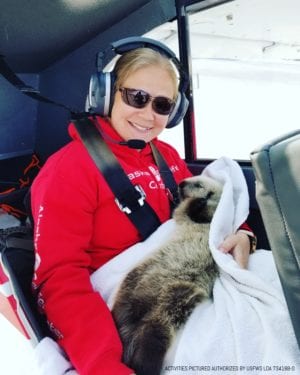
A female sea otter pup estimated to be three weeks old and weighing just five pounds is safe at the Alaska SeaLife Center in Seward after being found stranded against rocks on the Kenai Peninsula by a strong current.
Her condition as of entry into the ASLC’s Wildlife Response Program on Monday, Aug. 19, was stable. She is being bottle fed.
“We always work to get otter pups on a bottle as quickly as possible,” said Widlife Response curator Jane Belovarac. “It’s important they receive all the medications and nutrients they require, and a bottle is the most natural alternative for them.”
ASLC officials said the pup was picked up in Homer, but due to closure of the Sterling Highway because of the Swan Lake fire, they were unable to access the pup by road.
The community came together to transport her, including a donated flight by local pilot Duke Marolf, and the Homer Vet Clinic offered to care for the pup overnight until Marolf was able to assist with the pick-up.
Air transport of animals into the Seward Airport is rare, and only a few local airport drop-offs have happened in the center’s 20-year history, they said.
The arrival of the pup brings the total number of sea otters at the center to six. Four juvenile sea otters, Bishop, Ranney, Dixon and Riggs, have all graduated from the Wildlife Response Program and are awaiting final placement.
Tazlina and this new pup are the youngest otters at ASLC and require around-the-clock care for several months, even though their condition is stable, ASLC officials said. In the wild, the young pups are dependent on their mothers for about six months.
More information about the ASLC is online at alaskasealife.org.





